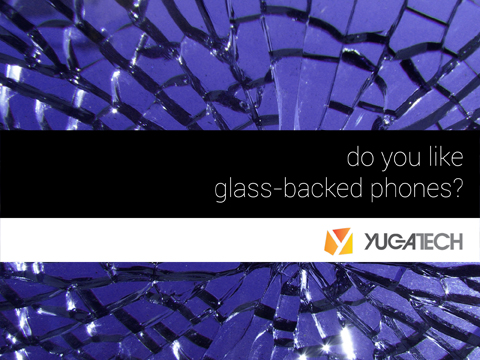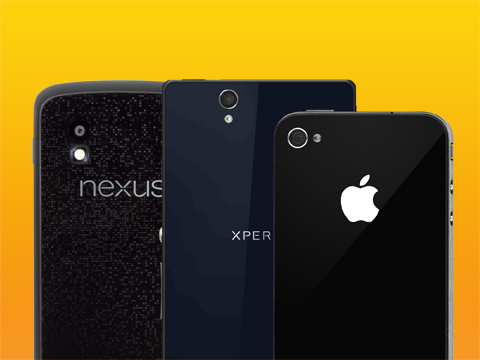Barely a year after running its own mobile division, Sony has gained a lot of traction and popularity in the Android smartphone market. The Sony Xperia Z is a testament to that. But, is it enough to make a mark in this very crowded and competitive space? Check out our full review after the break.

The first time we saw Sony’s own Android smartphone was just about a year ago with the Xperia S. It was a good start and this time, the Xperia Z aims to exceed all that expectation.
If you’re interested in what’s inside the box, here’s our unboxing video we did earlier:
Design & Construction.
Since the first Xperia handset, Sony has maintained its own distinct design signature. It was simple, monolithic and elegant, borrowing some of the style it has developed in other divisions like the camera and TV line.
The Xperia Z probably represents a refined approach to that design philosophy. The handset is a single piece of rectangular polycarbonate slab, sandwiched by two durable, tempered glass panels ( front is Dragontrail Glass from Asahi Glass Company and the back is Corning Gorilla Glass). It has a very thin frame at 7.9mm but still feels very solid and has a bit of heft to it.

All of the exterior ports are covered by water-sealed plastic caps allowing the handset to be water-resistant up to a certain degree. It was able to survive being drenched in heavy rains and submerged in flood (both simulated as shown in our sample video).
The micro-USB port is on the left side along with the micro-HDMI, the 3.5mm headphone jack is at the top side together with the slot-loaded micro-SIM and micro-SD card reader.
On the right side is the volume rocker together with a large, distinct power button. At the back is the 13-megapixel camera and LED flash.
What really makes this design very appealing is the dust and water-resistant features which separates it from the other flagship handsets in the market.
Display.
The Xperia Z comes with a 5-inch TFT display with a full HD 1080p resolution. At 1920×1080, the pixel density comes down to a high 443ppi, which is at par with the HTC Butterfly and Sharp Aquos SH930W which was released earlier in the local market.

The display looks clean and crisp, images are sharp and colors are vivid. What could probably turn off some people is the TFT LCD used with it. The viewing angles are still as wide as what one would expect compared to the likes of an IPS display.
However, the screen is a bit more reflective and can be hard to use in the outdoors when there’s direct sunlight or against bright light sources (we had a hard time taking photos with the screen at full brightness). The Sony Bravia Engine somewhat compensates for it so even under heavy scrutiny, you can’t actually see any significant difference.
Both the front and back panels are covered and protected by Dragontrail Glass and Gorilla Glass, giving the handset that glossy look which also makes it very prone to smudges or fingerprints.
OS, UI and Apps.
Since the birth of the Xperia line, Sony has been using their Timescape UI as a custom skin on top of Android. With the Xperia Z, the Timescape UI seems to have been diminished and replaced by what could be the new Xperia UI.

It looks more simple and less fancy. The handset does not have any soft buttons at the bottom corner of the bezel but instead places the home navigation right into the display (representing Back, Home and Recent Apps). We’re curious why Sony did not make use of that ample space which we oftentimes confuse and touch.

The UI customization is very polished and the additional native widgets look really good. There’s also a feature to run Small Apps on top of (floating) an existing window. The basic ones are Calculator, Notepad, Recorder and Timer but you can actually install a whole lot more of them from the Google Play Store (both free and paid). There are over a couple dozen Small Apps that supports this pop-up feature.

The virtual keyboard is pretty basic and very clean. The individual keys on the full qwerty keyboard are spaced well-apart but a bit slim though and could be hard to use if you have stubby fingers.

The Xperia Z comes with Android 4.1.2 right out of the box which is already good for a Jellybean device even if it doesn’t have the latest update. Access to hundreds of thousands of apps is readily available via the Google Play Store, both paid and free. If the stock UI isn’t to your liking, you can always download themes and launchers anytime.
Multimedia and Camera.
With the 5-inch display, watching movies or video is pretty neat and comfortable especially with 1080p hi-def videos. The picture quality is superb and sound quality is good. The lone speaker grill is found on the lower right side of the device which is a hit or miss depending on how you hold the device.
The Xperia Z comes with some pretty cool multimedia features and can be paired with other Sony devices that are networked in the house. It has support for Miracast, Throw (screen mirroring) and is also a Playstation Certified phone.

The Xperia Z packs a 13-megapixel camera that is undoubtedly one of the best cameras we’ve ever seen in a handset. It handles low-light conditions very well and because it is water-resistant, it can also take photos and videos under slightly rare conditions –like under rain, inside the swimming pool and even on highly humid or foggy atmosphere. These are conditions that you’d be afraid to use any other handset so the Xperia Z scored points here.
The native camera app is adequate and offers a number of options — Picture Effects, Sweep Panorama, Scene Selections, and Burst Mode that captures up to 10 frames per second for 9MP resolution photos and based on our raw tests, it can shoot up to 900 frames of 1MP each in under a minute. That’s a pretty fast camera right there.
Here are sample photos taken with the camera:
With ample lighting, the photos look stunning; images are very clean and crisp and color saturation is a little on the heavy side but not by much. Even under low-light conditions and using artificial light, the Xperia Z’s Exmor RS technology kicks in and gives clearer images with much less noise.
Here are some clips uploaded on YouTube:
Where it is going to be more useful, and fun, is when you take the camera outdoors — under the rain, in the swimming pool, and more. It might even survive a dive in a river or a short stay on the beach. that’s because of the water-resistant and dust-resistant design and construction.
Here’s a sample video of our simulated underwater adventure, captured on video:
Take note though that water resistance is limited to only 30 minutes and no deeper than 1 meter under water.
Performance and Benchmarks.
The device performs really well and can pretty much chew anything you throw at it, thanks to the powerful quad-core processor and 2GB of RAM. The handset can handle multiple apps running without choking or experiencing lags.
On Quadrant, the Xperia Z scored a high 8,090 points while on Antutu Benchmark, it breached the 20k mark at 20,179 points. With Nenamark 2, it got an impressive frame rate of 60.0 fps.

High frame rates ensure that movie playback is very smooth and gaming experience is flawless especially when running graphics-extensive games. This is on top of the fact that graphics engine pushes over 2 million pixels per frame on the full HD display.

The Xperia Z is among the most powerful handsets we’ve ever reviewed and that is evident from the record-breaking scores it got from our tests.
Call Quality, Connectivity and Battery Life.
The Xperia Z works well with regular phone calls and SMS. Calls are clear and crisp, almost no ambient noise. The only issue we’ve had is the position of the speakers (at the bottom left side) where it usually gets covered by the palm of your hands and muffles the sound.
Thankfully, the device also supports local LTE networks and we’re able to test it out in a number of locations in Metro Manila (we used Globe LTE for this purpose). An LTE sign appears just above the cell signal whenever the device detects the network to be LTE-ready.

We’re able to achieve a high of 25Mbps downlink with Speedtest.net and getting a much as 1.5MB/s when downloading via P2P.
Battery life is pretty good and we’re able to last the whole day, even a little more sometimes, on a single full charge. With LTE enabled though, this could drastically be reduced to just several hours especially when there’s heavy internet use.
Will 4G on and apps running at the background, we’re able to play about 3.5 to 4 hours of TV series on the device (at 50% screen brightness and 50% volume). Not bad for a device that fires up every pixel of the display’s 1080p resolution.
Conclusion.
Sony has proven that it can make a superphone that is both drool-worthy and with perfect timing. Great design, awesome camera and impressive performance all packed in a slim chassis that can stand a nasty weather. It’s not perfect but its pretty close to being one. The Sony Xperia Z stands as one of the best smartphones of 2013, and we’re not yet done with the first quarter.
We could not find any fault with it and we think highlighting the minor shortcomings is just plain nitpicking.
Suggested retail price of the Xperia Z is Php32,900. It is available in Widget City for only Php28,990 (see listing here).

Xperia Z specs:
5-inch full HD display (1920×1080), @ 443ppi
Sony Mobile Bravia Engine II
Qualcomm MDM9215M Snapdragon S4 Krait 1.5GHz quad-core
Adreno 320 Graphics
2GB RAM
16GB internal storage
up to 64GB via microSD card
DC-HSDPA 42Mbps, LTE 100Mbps
WiFi 802.11 b/g/n, dual-band
Bluetooth 4.0
NFC
GPS w/ aGPS support, GLONASS
Li-IOn 2370mAh battery
Dustproof (IP5X) and Water resistant (IPX57)
Android 4.1.2 Jellybean
Dimension: 139 x 71 x 7.9mm
Weight: 146g
What we liked about it:
* Solid design and build quality
* Great performance
* Impressive camera
* Water and dust resistance
What we did not like:
* Highly reflective TFT display
* Smudge and fingerprint magnet
The post Sony Xperia Z Review appeared first on YugaTech | Philippines, Tech News & Reviews.

















